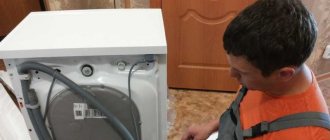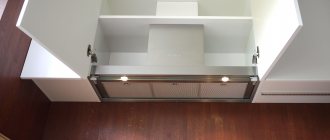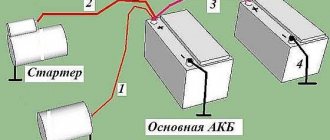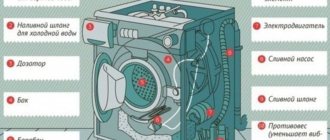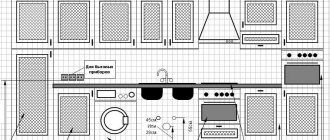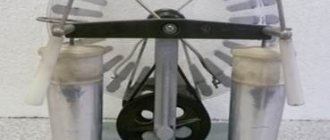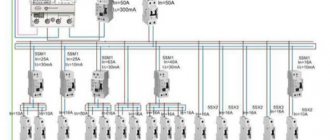Types of dryers
These machines are divided into several types:
- Drying cabinet.
- Drum drying.
The drying cabinet is quite difficult to use. Washed items will need to be hung by hand in a specially designated place. Excess moisture is removed using fans that supply warm air to the drying chamber. Electric or air heaters are used for heating. There is no point in connecting such a dryer to the sewer. All you have to do is use the spin mode and then transfer the items to the drying cabinet.
The design of the drum dryer, as well as the principle of its operation, resembles a drying cabinet. The difference is the presence of a special drum that speeds up drying. Thanks to rotation, hot air penetrates the fabric much faster. In addition, after using the drum machine, the need for ironing is reduced.
Such a device uses special programs that provide rotation mode, so things stop wrinkling. The drum dryer does not require a sewer connection. It is needed only if it is not possible to load wrung out items and manually drain unnecessary water from the tank.
Installing a heat pump dryer
The operation is similar to the condensation type. The difference is in the humid air. It passes through the evaporator and then into the sewer pipes, without any remaining moisture in the tray. The drain pipe will be needed as a connecting element to the sewer.
Connecting a dryer with a heat pump.
- The manufacturer provides for securing the tube at one end in the body of the equipment (as in the washing machine).
- The second end is connected to the sewer (or installed in the toilet or sink).
You can prevent water leakage during connection using a tee (it is built into a plastic drain pipe). The thickness of the hose and the tee pipe must be the same size.
Attention : to merge the pipe with the hose, use a plastic tip. A metal clamp with a rubber gasket is suitable for fastening. Needed to avoid damage to the tube.
This connection method increases the service life of the equipment. Removing excess water prevents corrosion of metal elements and damage to rubber.
Educational article: Which washing machine is better - vertical or frontal: 5 differences
Comparative characteristics of dryer types: table
| Condensation | Exhaust | With heat pump | |||
| + | — | + | — | + | — |
| — mobile installation, powered by electricity; | — reduces the service life of the machine (excess water is inside the equipment). | - rarely breaks; | — requires connection to external communications; | — extends the service life of the dryer; | — connects to external communications; |
| — mounting on the floor, in a built-in closet, on a washing machine; | - inexpensive; | — suitable for installation in a spacious room (preferably in a country house); | — modern, energy-efficient model (saving up to 50% of electricity); | - not cheap | |
| — budget; | - quick drying of clothes | - outdated version | — reduction of drying cycle | ||
| — no connection to external communications | |||||
Now you are notified how to connect the dryer. You can negotiate with a specialist or do it yourself at your own risk. When connecting, any type of dryer has its own characteristics. But there shouldn't be any difficulties. Just follow the instructions and our advice.
Read: Tumble dryer or washer-dryer - which is better: 7-point analysis
Drying types
Drying things can be done in different ways. They are divided into several technological groups, which are used in various drying ovens.
Condenser
The air heats up together with the water. Then it condenses using special elements mounted inside the device. Condensate accumulates in special tanks. This liquid no longer touches things. It is removed manually or through a connected sewer.
Important! The collected condensate is not suitable for watering indoor plants, as it may contain harmful substances left over from the washing powder.
Ventilation
Thanks to the heated air, the “humidity” is quickly removed from the car. In principle, this is the simplest type of drying. But for this you need to have good ventilation near the device. Otherwise, the surrounding area will be filled with excess moisture.
The industry also produces models equipped with additional parts. Infrared lamps are installed in the drying cabinet for disinfecting laundry. Thanks to the air ionizer, things become safe for human health. The listed elements are considered secondary. They only make the dryer more comfortable.
Dryer connection technology
You can do this work yourself, but only if you have experience in performing such operations.
Note! Before connecting the dryer to an existing sewer or connecting the power supply, carefully consider the installation method.
A professional master will do this work quickly and efficiently with a certain guarantee. To prevent the machine from breaking down in the future, the technician will advise you on how best to operate the machine and what operations can lead to breakdown.
Of course, calling a specialist guarantees good work, but will require additional financial expenses. Do-it-yourself installation is possible if you are familiar with construction and plumbing work. To connect the dryer to the sewer, use a special drainage system. To supply power, a socket is mounted next to the device (you can use a carrier).
How to connect a clothes dryer
Connecting the dryer requires connection to the electrical network, as well as to ventilation or sewerage. In all cases, installation is quite simple.
How to connect a dryer to the sewer
The diagram for connecting the dryer drain to the sewer system looks like this:
In general, the algorithm for connecting water to the dryer is no different from the process of installing a washing machine. Before putting the unit into operation for the first time, you need to make sure that all fastenings are secure and that there will be no leaks anywhere.
To connect to the sewer you need a siphon with a double pipe and a nozzle on the dryer hose
How is the dryer connected to the ventilation?
There is a special hole on the body of exhaust-type dryers, to which a soft outlet pipe is attached. It is fixed using a plastic clamp, usually supplied in the kit. The outlet of the corrugated pipe must be directed into a window, into an opening in the wall or directly into the ventilation.
The exhaust hose must be routed with a minimum number of bends and turns.
Connecting the clothes dryer to the mains
Any dryer, regardless of model, is powered from the mains. Most often, the connection is made through a regular household outlet, since the power of home units rarely exceeds 2500 W.
Tools required for connection
To connect the dryer, you must have:
- Knife. Useful for cutting drainage to the appropriate length. Sometimes this part is included in the device kit. If it is missing, it can be purchased separately by cutting it to the required length. When purchasing, be sure to check the quality of the drainage pipe. Bends, cracks and tears are not allowed.
- Clamps for fixing drainage. Not included with the cabinet. They can be purchased at a specialized hardware store. These parts are made of a metal strap that can be tightened using a locking mechanism.
- Screwdriver. A necessary tool for working with clamps. She tightens the drainage clamp, creating a tight connection.
Such a small set of tools is enough to install and connect the dryer yourself.
What you need and connection diagrams for the dryer
There are four main schemes for installing and connecting a dryer in an apartment or private house. Which one to choose depends on the size of the room, the interior and the type of car:
- In the column. The dryer is placed on top of the washing machine. Typically, the method is used if household appliances are the same size and from the same brand.
Installing a dryer and washing machine in a column allows you to save space as much as possible - Horizontally near the washing machine. When using this scheme, the drying unit can be easily connected to communications, and there is no risk of collapse of a heavy structure.
The dryer and washing machine are installed side by side in spacious rooms - Under the kitchen countertop. You can install the dryer directly next to the sink. For units with water drainage into the sewer system, this connection diagram is most convenient.
When installed under the countertop, the drain hose does not have to be pulled across the room and extended - Into the niche. This method is usually practiced when installing the unit in the bathroom. Connecting in a niche is inconvenient only because you have to significantly rebuild the bathroom
The dryer or column can be placed close to the hood and sewer, and the wires and hoses will be hidden from view.
A video about connecting a clothes dryer recommends using special fasteners included for installation:
For any connection method, special tools will be required to carry out the work. Namely:
- construction knife for cutting off excess hoses;
- clamping clamps for fastening the corrugated pipe to the machine and the ventilation inlet;
- pliers and a screwdriver with replaceable tips, they are used to fix the clamps.
Advice! Before making the connection, you should also prepare a drill, a hammer drill and a hacksaw for plastic and metal, in case you have to make holes in the walls or cut into pipes.
Do I need to connect to a sewer?
When developing drying units, engineers and technologists decided to create machines that have the possibility of such a connection. However, each owner decides for himself whether to make such a connection or do without it. If there is no connection to the sewer, you will have to constantly monitor the level of the water container (if available). The liquid is drained manually.
Connecting the sewerage system to the dryer is done to make it more comfortable to use. Now you won’t need to think about the moisture present in wet laundry; it will all be removed through the sewer. Of course, if there is an opportunity to connect a sewer, be sure to take advantage of it.
Household appliances Dryer



